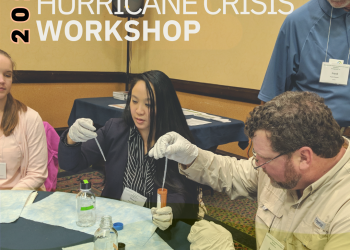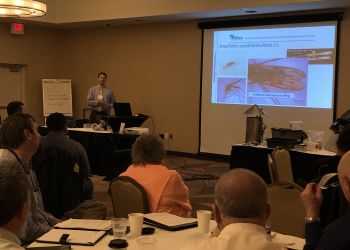The U.S. Food and Drug Administration (FDA) collaboratively developed the Voluntary National Retail Food Regulatory Program Standards (Retail Program Standards) 20 years ago. The Retail Program Standards are designed to help food regulatory programs enhance the services they provide to the public. When applied in the intended manner, the Retail Program Standards should
- identify program areas where an agency can have the greatest impact on retail food safety;
- promote wider application of effective risk-factor intervention strategies;
- assist in identifying program areas most in need of additional attention;
- provide information needed to justify maintenance of or increase in program budgets;
- lead to innovations in program implementation and administration; and
- improve industry and consumer confidence in food protection programs by enhancing uniformity within and between regulatory agencies.

In 2012, NACCHO launched a Retail Program Standards Mentorship Program through a Cooperative Agreement with FDA to support retail food regulatory programs in implementing these standards. The program provides peer-to-peer assistance and intensive technical support to help jurisdictions conform with the standards efficiently and effectively.
Note: The RFA for the eighth cohort of the mentorship program will come out on September 5th. Look out for an announcement on the mentorship program’s webpage.
This post is the first in a new Retail Program Standards blog series from NACCHO to showcase the progress that communities across the country have made in retail food protection. Each month, we will feature the experiences, challenges, and successes of jurisdictions that have worked toward each standard.
The series begins with the Self-Assessment, a gap analysis tool that includes an internal review process to (a) determine whether the existing retail food safety program meets the Retail Program Standards and (b) form a plan of action.
This post includes responses from two jurisdictions:
- Anne Lowry, REHS, Environmental Health Director, Chatham County Public Health Department, Pittsboro, NC
- Cathleen Liberty, MPH, Director of Public Health, Marlborough Health Department, Marlborough, MA
How did you become involved in the Retail Program Standards, and why did you enroll?
Lowry: Initially, Chatham County became involved with the Retail Program Standards because of the funding opportunities it presented [e.g. the Retail Program Standards Grant Program, managed by the Association of Food and Drug Officials (AFDO)]. In 2011, we received information about available funding for enrolling, and we immediately contacted our FDA Regional Retail Food Specialist Donna Wanucha to discuss what was involved. Donna explained that the program standards focused on local retail food program continuous quality improvement, which was a perfect fit for the vision of our program.
Liberty: I became involved with the Retail Program Standards after attending a sharing session for the towns and cities in Massachusetts where I learned about the goal of the Retail Program Standards. When the Marlborough Health Department inspects food establishments, we educate the establishments’ staff on how to prevent foodborne illnesses. I was intrigued as to how our health department could incorporate an approach through the standards to continuously improve and build upon our existing program to reduce foodborne illnesses. I enrolled the health department in the Retail Program Standards so we could write a grant to provide person-in-charge training for the staff of food establishments on risk-factor intervention strategies to safeguard the care and security of the food supply.
What steps did you take to get started in the self-assessment process?
Lowry: The first step Chatham County took to start the self-assessment was to schedule a meeting with Donna Wanucha of the FDA to discuss what was involved. Donna reviewed each of the standards with staff and addressed concerns about the time commitment and resources required to enroll. After the meeting, staff volunteered to complete the self-assessment on individual standards that interested them. Once everyone had completed the self-assessment for their assigned standards we met again to discuss why staff thought we did or did not meet each standard. We were close on several standards, but we did not initially meet any of them.
Liberty: The first step the Marlborough Health Department took was to attend sharing sessions both for communities who were in the beginning stages of enrolling and for communities who had already done work on the standards to learn what the standards were, the benefits of using them, and best practices for starting the program. Next, we used the self-assessment to identify program needs and establish program priorities and plans to address those needs as resources became available. Our FDA Regional Retail Food Specialist Steve Nattrass was very helpful in introducing the standards and guiding us through our questions about the standards.
What challenges did you face (e.g. leadership and/or staff buy-in)? How did you work to overcome these challenges?
Lowry: Luckily, Chatham County Health Department leadership at the time and since has been supportive of our enrollment in the Retail Program Standards. One of our primary challenges, however, was finding time to work on the standards. To overcome this challenge, we incorporated the standards into our strategic plan and individual work plans, which allowed the standards to become intertwined into our day-to-day activities. We also determined which standards were priority for our program and decided to focus on those first without getting too worried about completing all the standards within a certain amount of time.
What outcomes and benefits came out of conducting a self-assessment?
Lowry: One of the benefits of conducting the self-assessment was discovering that even though our program had some gaps, we were on track for addressing priority items in each of the standards. The self-assessment also provided a framework for addressing the gaps, which allowed us to develop a work plan to either complete an entire standard or to address some of the requirements of individual standards.
What were your next steps after the self-assessment?
Lowry: After completing the self-assessment, we evaluated which standards were easily attainable, which standards resonated with our group, and which ones would be difficult or would require outside help or even local or state legislation to complete. After much discussion we elected to conduct our first risk factor study (Standard 9) before tackling the other standards. The report generated from the risk factor study allowed us to prioritize limited staff and resources to address the top foodborne illness risk factor observed in our establishments.
Liberty: The next steps after the self-assessment were to identify the health department’s program priorities and to discover what resources were available to implement these priorities. The Marlborough Health Department has received two grants from the Retail Program Standards Grant Program. The first grant was to obtain a food consultant to provide person-in-charge training to existing and new food establishment staff. The second grant was to (a) prepare a quarterly newsletter for food establishments to educate workers about food safety and security to reduce foodborne illness and (b) provide active managerial control training to food establishments mirroring the 2013 FDA Model Food Code, which the Marlborough Health Department adopted in 2018.
What are some resources that were helpful to you in the self-assessment process?
Lowry:
- Our most valuable resource aside from a committed staff was Donna Wanucha, our FDA Regional Retail Food Specialist. Donna was available to answer any questions or concerns we had and to support us in our efforts to meet the standards. She established yearly meetings with other North Carolina counties enrolled in the standards so we could discuss the standards, share ideas, and most importantly share documents and policies.
- We attended the Program Standards Audit/Verification Workshop led by the FDA early in our enrollment. This workshop provided additional understanding of how to truly evaluate if we met a standard from the perspective of an auditor.
- The NACCHO mentorship program helped immeasurably as we were introduced to supportive NACCHO staff that provided connections with jurisdictions across the country that were also working on the standards. The FDA funds the mentorship program through NACCHO.
- The FDA also provides funds through the AFDO-managed grant program to support meeting the standards.
- The Clearinghouse Work Group interpretations of the program standards requirements were helpful.
Stay tuned for the next post, which will focus on Standard 1: Regulatory Foundation, coming in September.
Contact Amy Chang at [email protected] with any questions.






